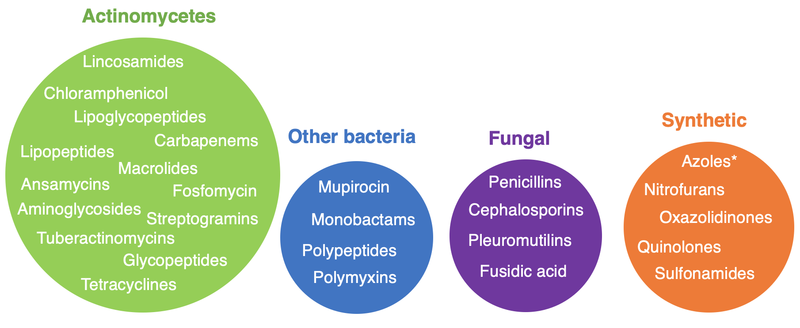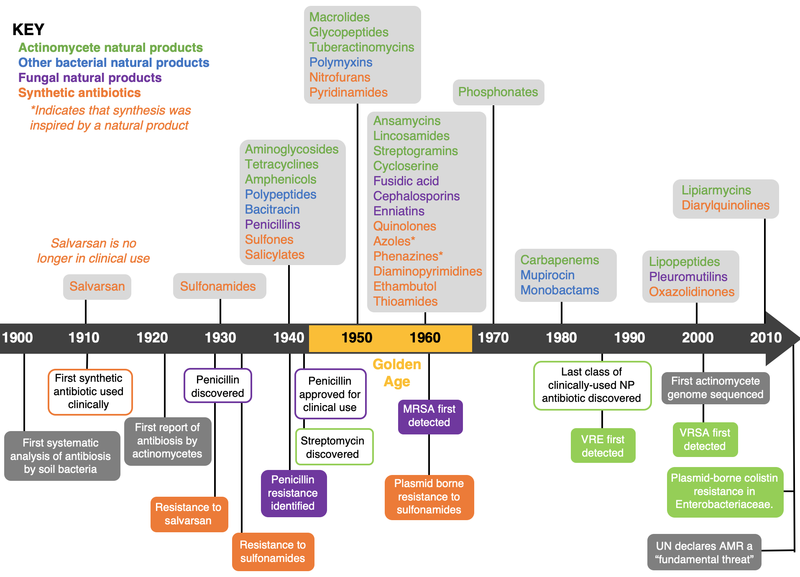Background: Difference between revisions
No edit summary |
Sam Prudence (talk | contribs) No edit summary |
||
| (16 intermediate revisions by 2 users not shown) | |||
| Line 2: | Line 2: | ||
ActinoBase was created by the | ActinoBase was conceived at the 2019 [https://microbiologysociety.org Microbiology Society] meeting in Belfast and then created by <em>Streptomyces</em> researchers as an online companion to the [https://www.nhbs.com/practical-streptomyces-genetics-book Practical Streptomyces Genetics] book published by the [http://www.jic.ac.uk John Innes Centre] in 2000. This book is commonly referred to as the <em>Streptomyces</em> bible and is still a valuable reference to have in the lab if you can get hold of a copy. However, it was written at a time when next generation sequencing wasn't generally available to researchers for techniques such as ChIP- and RNA-seq and before the age of precise genome editing using tools such as CRISPR/Cas9. By creating a wiki that can be edited and updated by the community we can all share our up to date protocols, recipes and know-how for working with these complex and important bacteria and make the information easily accessible to all. | ||
[[File:StrepBible.png|Practical Streptomyces Genetics]] | |||
Follow us on twitter [https://twitter.com/ActinoBase @ActinoBase] or join the discussion via [https://twitter.com/hashtag/ActinoBase?src=hash #ActinoBase] to keep up to date with the our progress. If you have any questions or requests you can email the ActinoBase committee overseeing the construction of this website at teamwikimyces@gmail.com | Follow us on twitter [https://twitter.com/ActinoBase @ActinoBase] or join the discussion via [https://twitter.com/hashtag/ActinoBase?src=hash #ActinoBase] to keep up to date with the our progress. If you have any questions or requests you can email the ActinoBase committee overseeing the construction of this website at teamwikimyces@gmail.com | ||
<h3><strong>Antibiotics</strong></h3> | |||
The filamentous actinomycetes make around two thirds of all known natural product antibiotics and about half of the clinically used antibiotics. | |||
[[File:Antibiotics.png | 800px]] | |||
Most of these were discovered during the Golden Age which ran from the 1940s to the 1960s. | |||
[[File:Timeline.png | 800px]] | |||
Figures are taken from: Hutchings MI, Truman A and Wilkinson B (2019). Antibiotics: past, present and future. Curr. Op. Microbiol. Under review. | |||
Revision as of 15:42, 1 August 2019
ActinoBase: a Streptomyces Community Wiki
ActinoBase was conceived at the 2019 Microbiology Society meeting in Belfast and then created by Streptomyces researchers as an online companion to the Practical Streptomyces Genetics book published by the John Innes Centre in 2000. This book is commonly referred to as the Streptomyces bible and is still a valuable reference to have in the lab if you can get hold of a copy. However, it was written at a time when next generation sequencing wasn't generally available to researchers for techniques such as ChIP- and RNA-seq and before the age of precise genome editing using tools such as CRISPR/Cas9. By creating a wiki that can be edited and updated by the community we can all share our up to date protocols, recipes and know-how for working with these complex and important bacteria and make the information easily accessible to all.
Follow us on twitter @ActinoBase or join the discussion via #ActinoBase to keep up to date with the our progress. If you have any questions or requests you can email the ActinoBase committee overseeing the construction of this website at teamwikimyces@gmail.com
Antibiotics
The filamentous actinomycetes make around two thirds of all known natural product antibiotics and about half of the clinically used antibiotics.
Most of these were discovered during the Golden Age which ran from the 1940s to the 1960s.
Figures are taken from: Hutchings MI, Truman A and Wilkinson B (2019). Antibiotics: past, present and future. Curr. Op. Microbiol. Under review.


